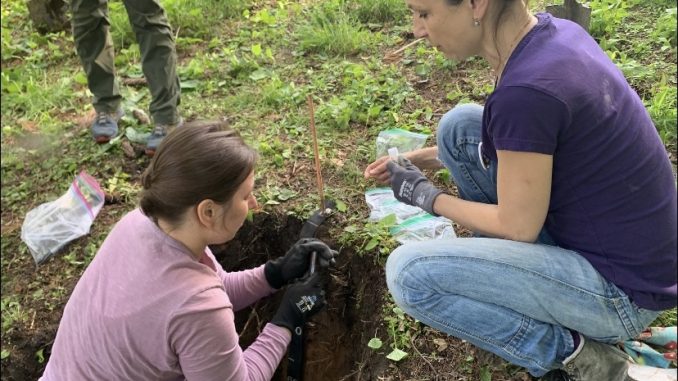
By Serin Sarsour
The Green-Wood Cemetery is a 478-acre national landmark located in Brooklyn that holds rich art and history deep in its core, but there is more to the cemetery than meets the eye.
Theodore Muth is currently an associate professor in the Biology Department at Brooklyn College, working in the school since 2000. He is also a part of two different projects at the Green-Wood Cemetery, where he collects samples of the soil, studying if there is any correlation between the diversity of microorganisms depending on the type of landscape management that is being done on the site.
“One of the bigger questions that my lab is interested in is how does human activity affect soil microbial communities? We have some hypotheses about certain types of activities that are going to either increase or decrease the diversity of the soil microbial communities,” said Muth.
When a colleague notified Muth of the work being done at Green-Wood, he submitted a proposal. As a microbiologist, Muth was eager to partake in the research being done at the cemetery after he was awarded Green-Wood’s inaugural environment research grant earlier this year. Moving from an apple farm in the middle of nowhere in upstate New York to New York City constantly made Muth consider how all of this newfound human activity inevitably impacts the natural environment, specifically microbial communities.
Muth explained that there are essentially three different types of management of the grounds at the cemetery.
“One is like mowing and very highly managed, kind of like the quad out here [at BC]. Then, they have less managed, which is called perpetual meadow, which they kind of just let grow. And they do some maintenance, but not a whole lot. And then there’s some wooded areas, which are completely unmanaged,” Muth said. “So we have this kind of a spectrum from highly managed, medium managed, and completely unmanaged.”
Muth, along with other researchers who were awarded the same grant, collect soil samples from each of those three different regions to try to see if there are differences that can be tied back to how the level of management of the ground can shift the microbial communities. For instance, how the communities are shifted when the area is mowed and fertilized would be compared to how they would move when nothing is being done to a section of soil at all. Muth credits the cemetery’s excellent records of the management of the ground as a helping hand with this research. One of those record keepers who makes these studies more feasible is Sara Evans, a Brooklyn College alumna and manager of the Horticulture Operations and Projects at Green-Wood Cemetery.
“Green-Wood, spanning 478 acres and situated amongst a diversity of urban communities, serves as a perfect field laboratory for conducting research into urban ecology,” Evans said.
Evans has worked full-time at the cemetery since 2017 where she manages all of the records for their living collection, or tree collection of the arboretum. She also oversees several horticulture operations and planting projects, along with supervising any contractors on the site who are doing tree work and a lot of the environmental research that is being done at Green-Wood.
The method most used to analyze the soil is a metagenomics strategy where Muth and the rest of his team use DNA from the environment as a proxy for the microorganisms that are in that environment, which could be soil or water, among others. After collecting the sample, all of the DNA is extracted. Then, the group sequences one gene that is found in all bacteria. By sequencing that gene and comparing the sequences to the database, the researchers can see all the different bacteria that were in that sample. These studies have led Muth and his colleagues to find a difference in diversity between managed and unmanaged spaces.
“Potentially, kind of counterintuitively, the bacterial diversity in the soils of the managed environment is more diverse than the unmanaged soils,” Muth explained. “ […] You kind of think degraded environments or a lot of human influence can have a negative impact on biodiversity. That’s probably true for like animals, birds, insects, and plants, but actually having stresses on the community creates more little micro-environments for microorganisms to grow in.” After analyzing multiple soil samples in different sections of the cemetery, Muth shared that various studies, including one of Green-Wood’s and other parts of NYC, have indicated that worn out soils that have been more heavily impacted by human activity have greater bacterial or microbial diversity as a result.
Though Muth noted that he is still in the middle of this work, he and the other researchers still have not had the chance to look at the metabolic potential of the microbial communities. Once they do, further analysis of the soil at Green-Wood will determine the environmental changes and nutrients found in the soil’s cellular machinery.
